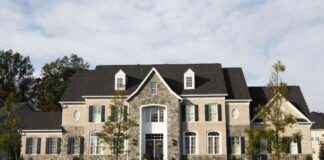American homeowners are sitting on a gold mine of unused space in their homes, with a record number of extra bedrooms going unoccupied. According to a recent report from Realtor.com, the number of spare bedrooms in homes across the country has reached an all-time high, offering a glimpse into the evolving landscape of American housing.
The latest Census data reveals that there are 31.9 million extra bedrooms in American households, a significant increase from 31.3 million in 2022. This surge in unused bedrooms can be attributed to the shrinking size of households, which have decreased from 3.1 persons per household in 1970 to a record low of 2.5 persons per household in 2023. As homes have grown larger over the years, with the average number of bedrooms per home rising from 2.5 in 1970 to 2.8 in 2023, the surplus of unused space has become more pronounced.
Reasons Behind the Trend
Senior economist at Realtor.com, Ralph McLaughlin, points to two main factors driving the trend of excess bedrooms: the expansion of home sizes and the decrease in household sizes. The rise in guest rooms is particularly prevalent in more affordable areas, where it is easier to find homes with additional bedrooms. While the average size of new homes saw a significant increase during the “McMansion” era of the 1980s, this growth has plateaued in recent years due to rising costs and changing consumer preferences for energy-efficient and environmentally friendly homes.
Regional Disparities
Regional differences play a significant role in the distribution of excess space, with the Mountain West and South regions of the United States leading the trend due to larger floor plans and ample land availability. In contrast, urban areas tend to have less surplus space, reflecting the compact nature of city living. The markets with the highest share of total excess bedrooms include Ogden, Utah; Colorado Springs, Colo.; and Salt Lake City, Utah, while cities like Miami and New York have the lowest proportion of unused bedrooms.
Implications for Homeowners
As American homeowners navigate the changing landscape of real estate, the abundance of unused space presents both opportunities and challenges. Whether homeowners value the extra space or view it as an excess burden remains to be seen, raising questions about the sustainability of housing trends in the future. As the housing market continues to evolve, understanding the dynamics of excess space can empower homeowners to make informed decisions about maximizing their property’s potential.
In conclusion, the surplus of unused bedrooms in American homes offers a fascinating glimpse into the evolving nature of housing trends across the country. By examining the reasons behind this phenomenon, exploring regional disparities, and considering the implications for homeowners, we can gain valuable insights into the changing dynamics of the American housing market. As homeowners grapple with the challenge of maximizing their property’s space, the excess of unused bedrooms serves as a reminder of the complex interplay between home design, household size, and regional factors in shaping the future of American real estate.



















